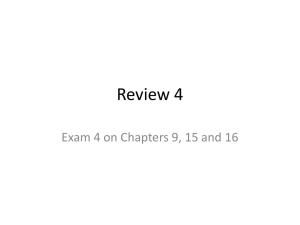SCHM 103 Fundamentals of Chemistry Final Exam Study Guide The
advertisement
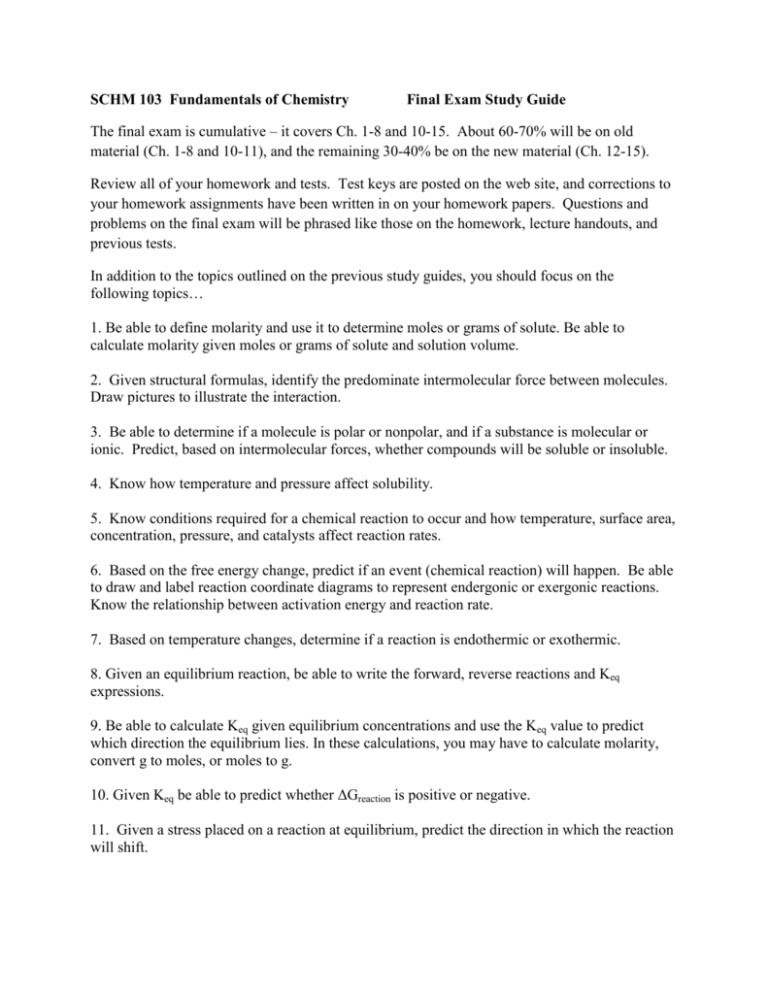
SCHM 103 Fundamentals of Chemistry Final Exam Study Guide The final exam is cumulative – it covers Ch. 1-8 and 10-15. About 60-70% will be on old material (Ch. 1-8 and 10-11), and the remaining 30-40% be on the new material (Ch. 12-15). Review all of your homework and tests. Test keys are posted on the web site, and corrections to your homework assignments have been written in on your homework papers. Questions and problems on the final exam will be phrased like those on the homework, lecture handouts, and previous tests. In addition to the topics outlined on the previous study guides, you should focus on the following topics… 1. Be able to define molarity and use it to determine moles or grams of solute. Be able to calculate molarity given moles or grams of solute and solution volume. 2. Given structural formulas, identify the predominate intermolecular force between molecules. Draw pictures to illustrate the interaction. 3. Be able to determine if a molecule is polar or nonpolar, and if a substance is molecular or ionic. Predict, based on intermolecular forces, whether compounds will be soluble or insoluble. 4. Know how temperature and pressure affect solubility. 5. Know conditions required for a chemical reaction to occur and how temperature, surface area, concentration, pressure, and catalysts affect reaction rates. 6. Based on the free energy change, predict if an event (chemical reaction) will happen. Be able to draw and label reaction coordinate diagrams to represent endergonic or exergonic reactions. Know the relationship between activation energy and reaction rate. 7. Based on temperature changes, determine if a reaction is endothermic or exothermic. 8. Given an equilibrium reaction, be able to write the forward, reverse reactions and Keq expressions. 9. Be able to calculate Keq given equilibrium concentrations and use the Keq value to predict which direction the equilibrium lies. In these calculations, you may have to calculate molarity, convert g to moles, or moles to g. 10. Given Keq be able to predict whether ΔGreaction is positive or negative. 11. Given a stress placed on a reaction at equilibrium, predict the direction in which the reaction will shift. 12. Be able to predict the products for an acid base reaction and identify the proton donor(acid) and proton acceptor(base). 13. Given an acid, be able to write an acid dissociation reaction. 14. Be able to determine [H3O+] & [OH-] using the Kw expression. Given these concentrations, be able to determine whether the solution is acidic, basic, or neutral. Also be able to calculate the pH given [H3O+] & [OH-]. Make sure your answers have the proper sig figs!

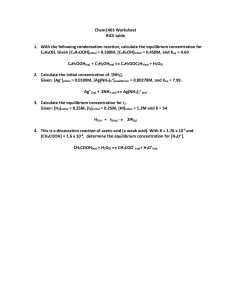


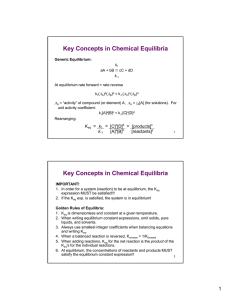
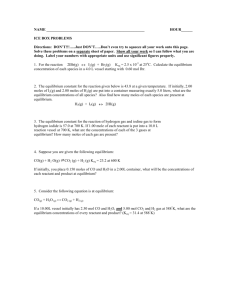


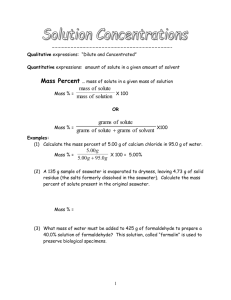
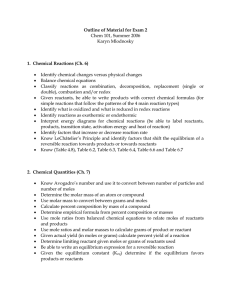
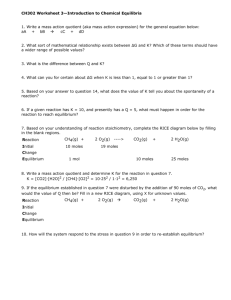


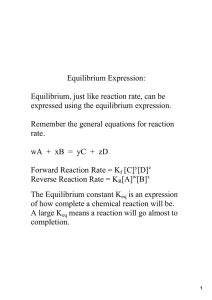
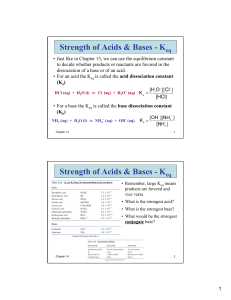
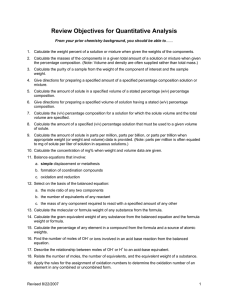
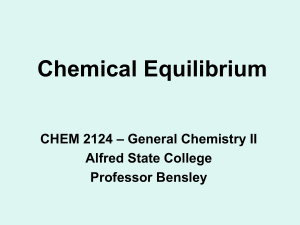
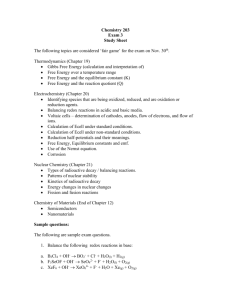
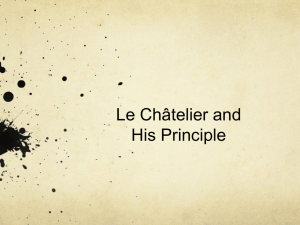
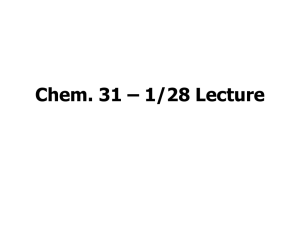
![2 [B]](http://s2.studylib.net/store/data/009861274_1-797e0e32cb4f69343088b2a992994675-300x300.png)
